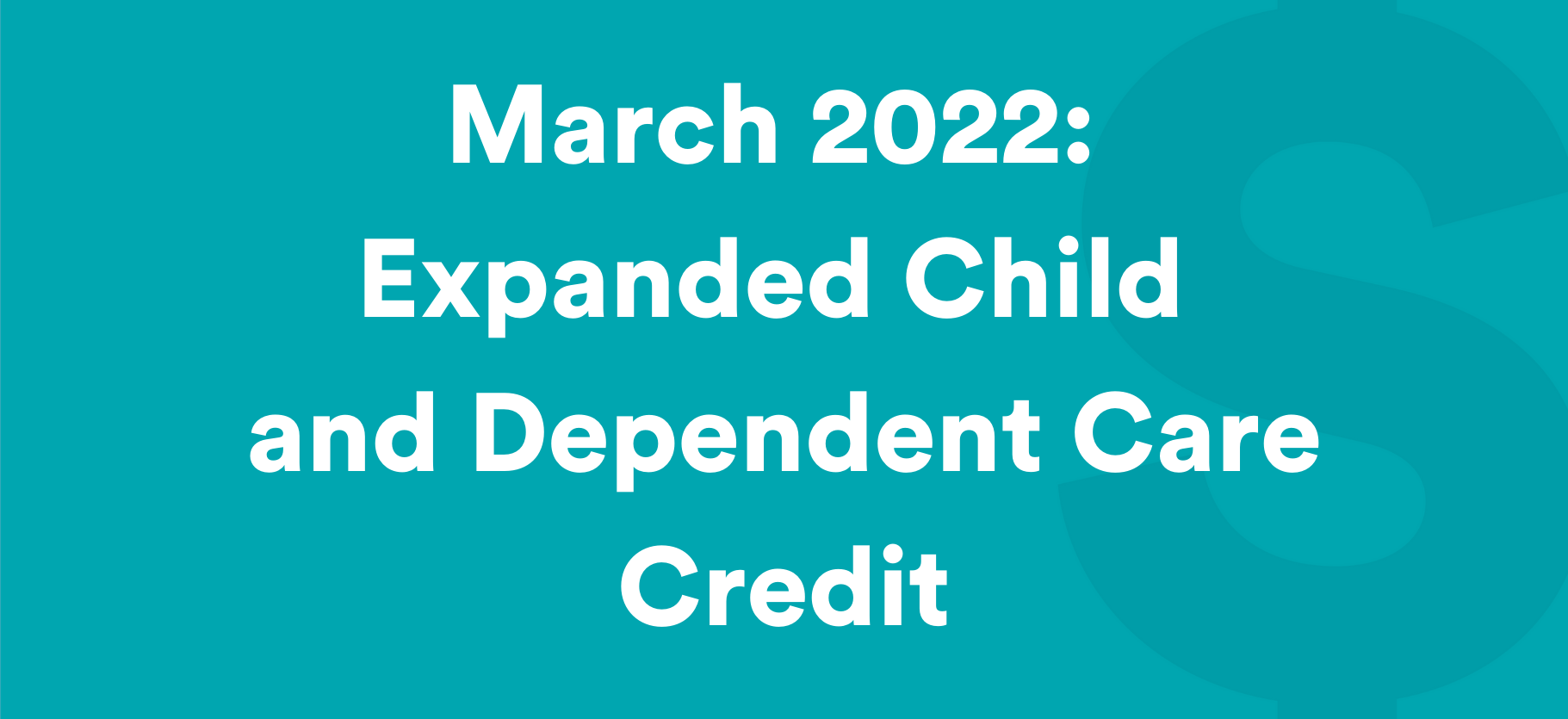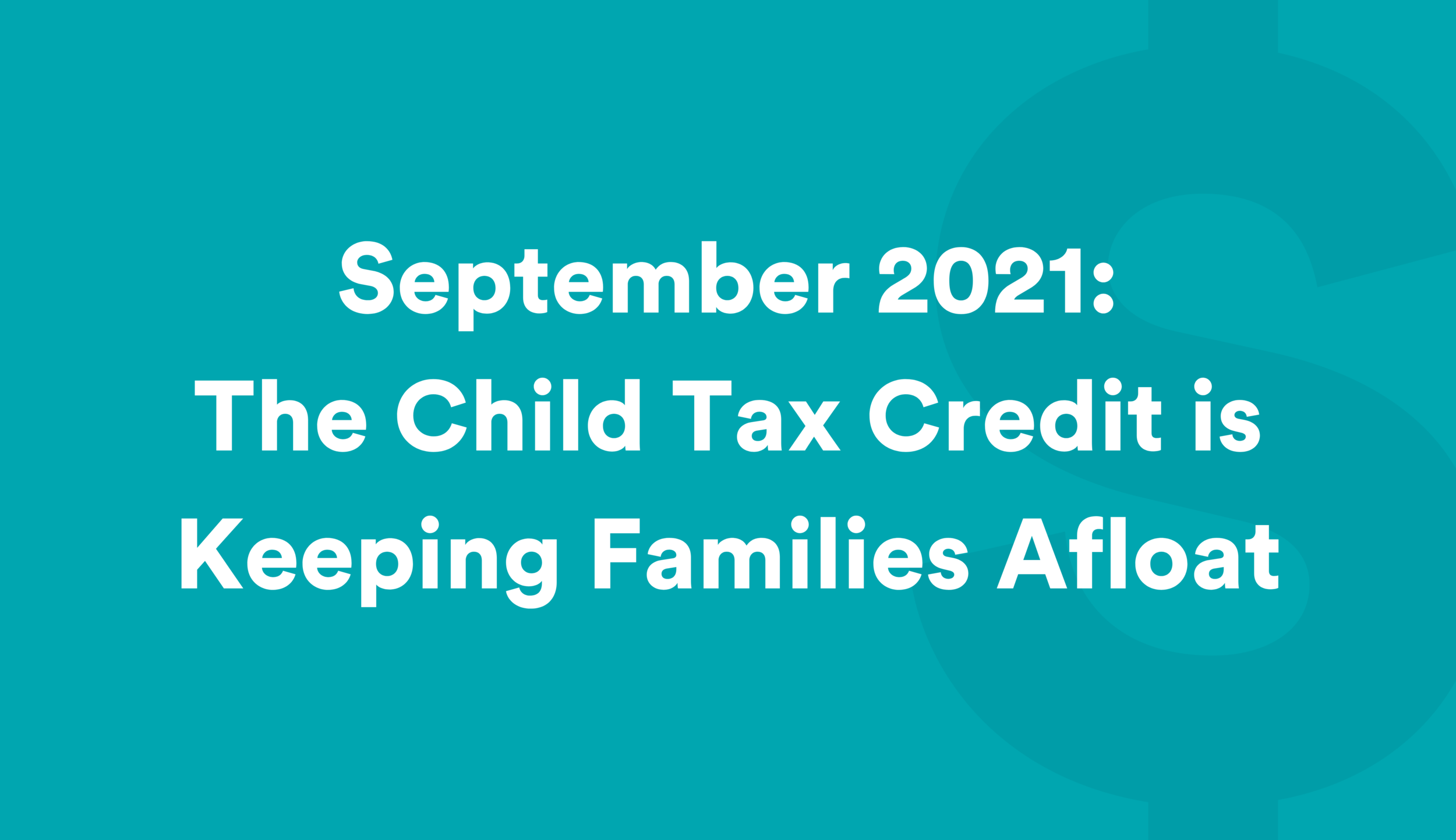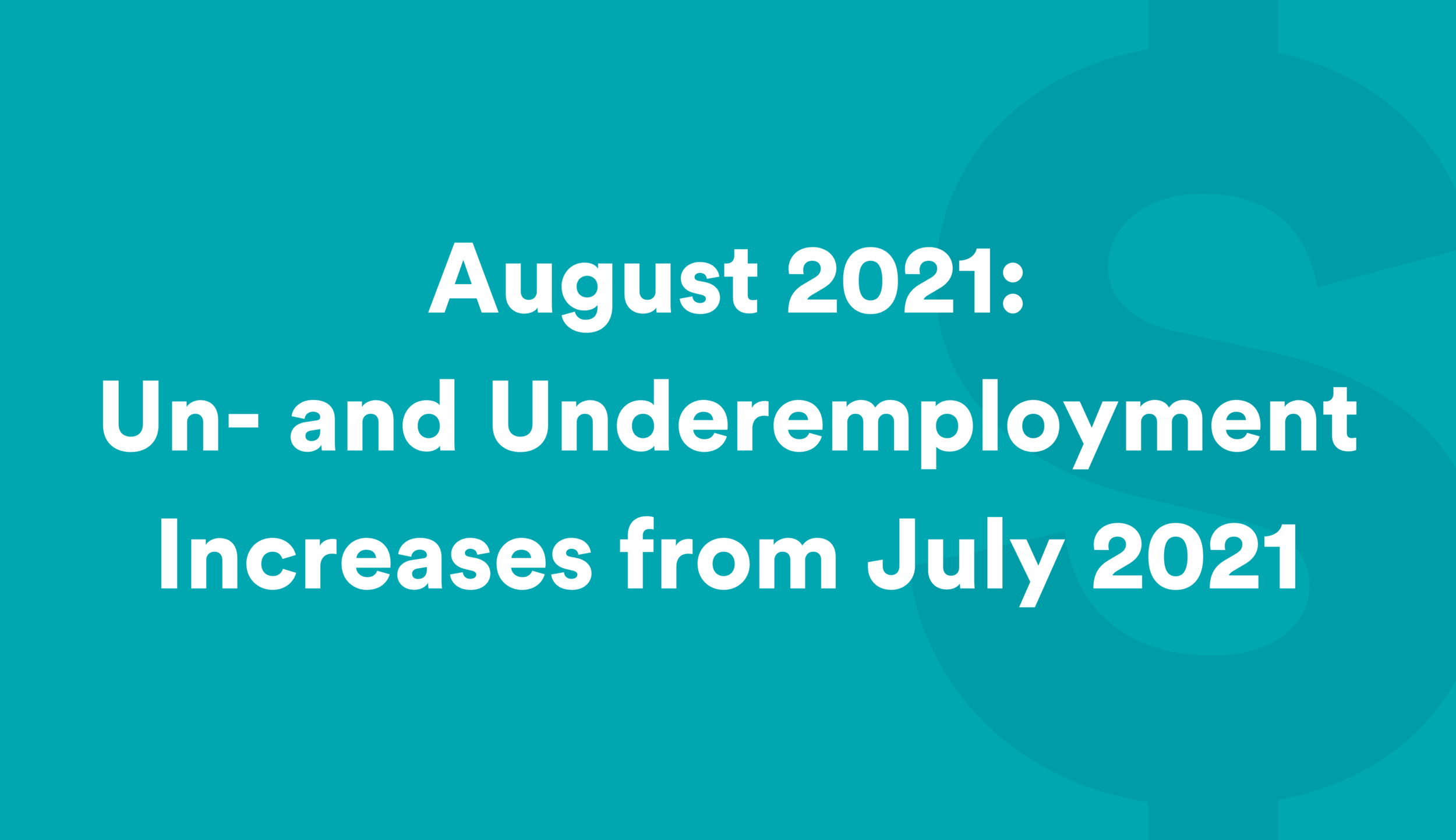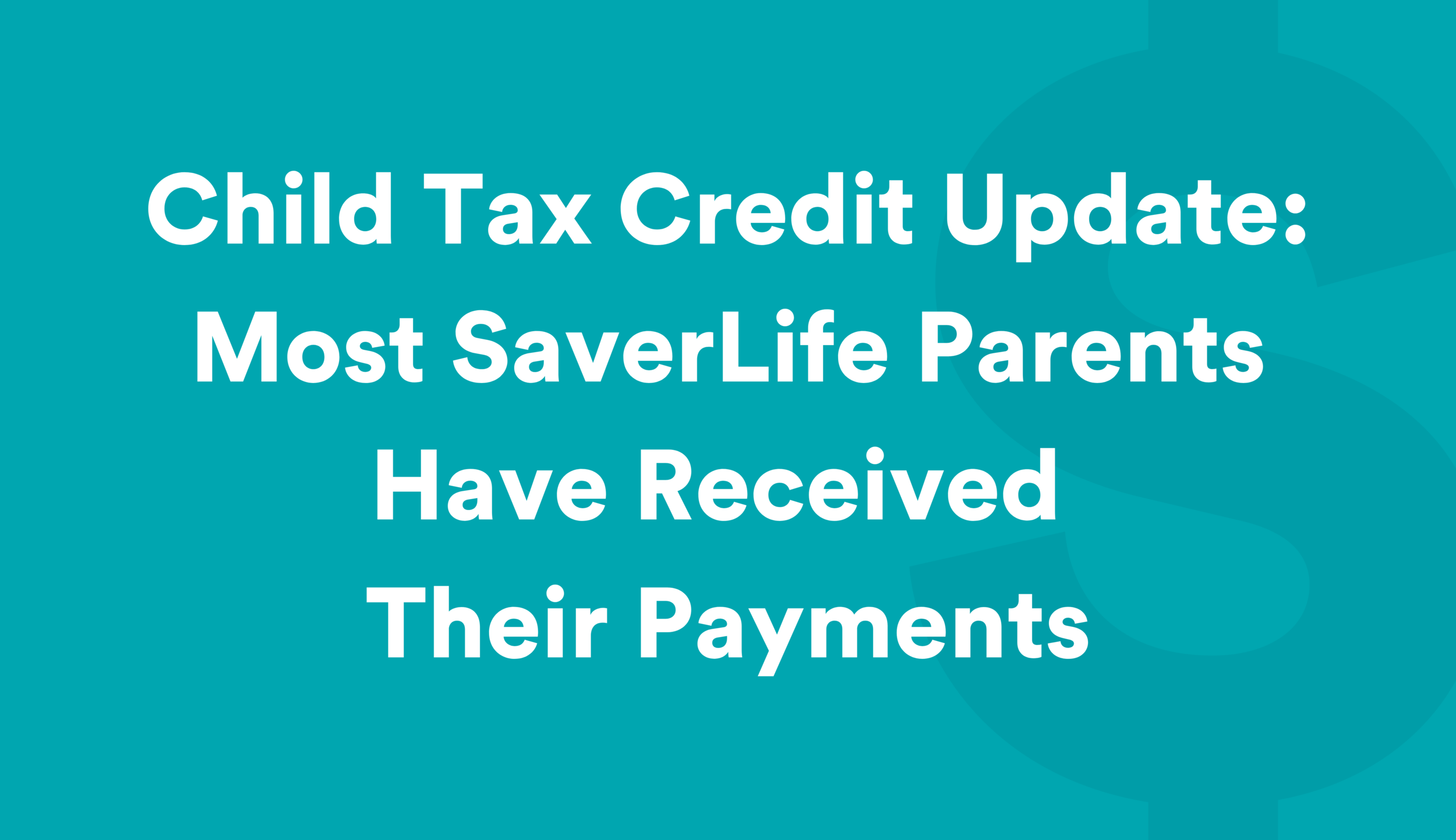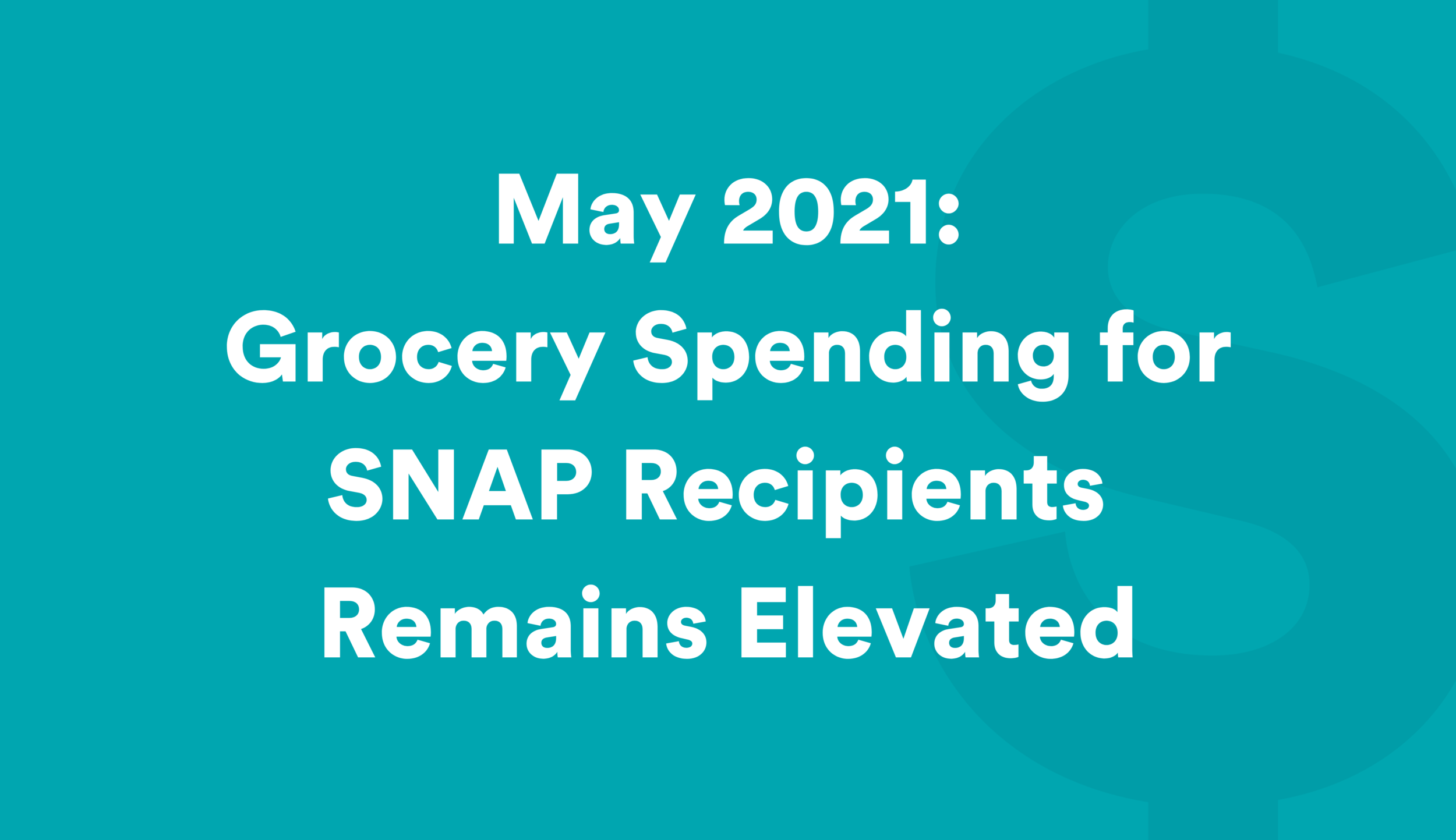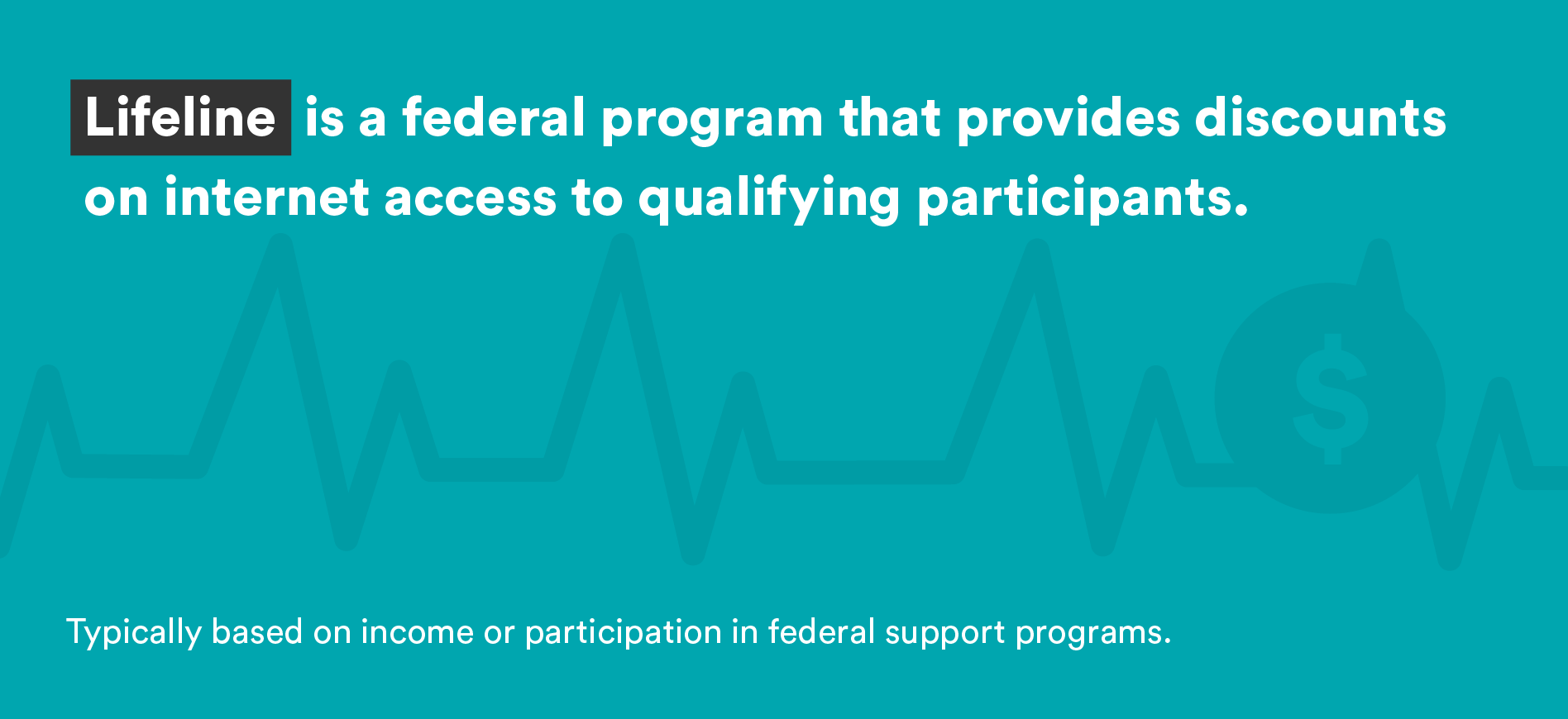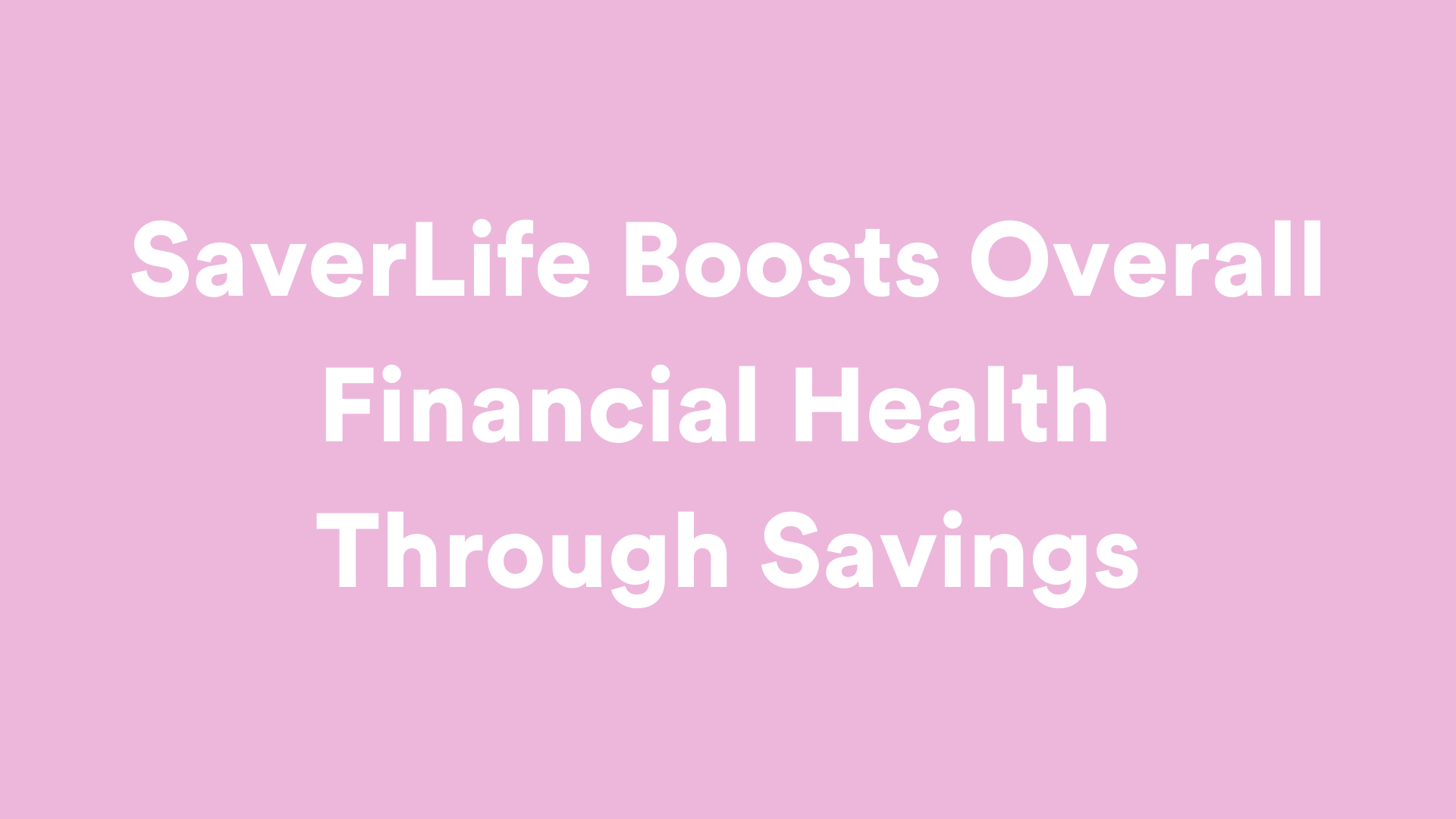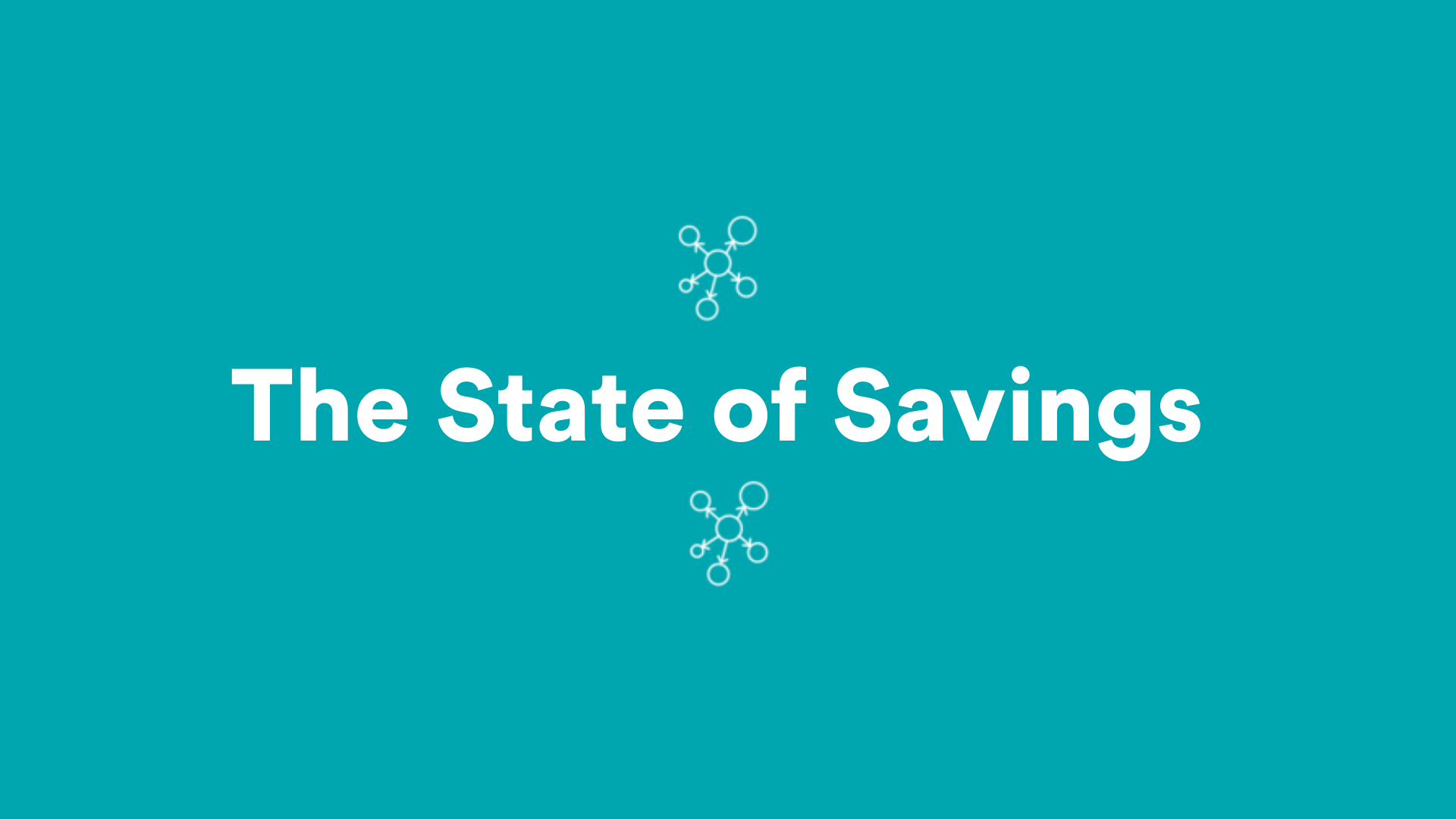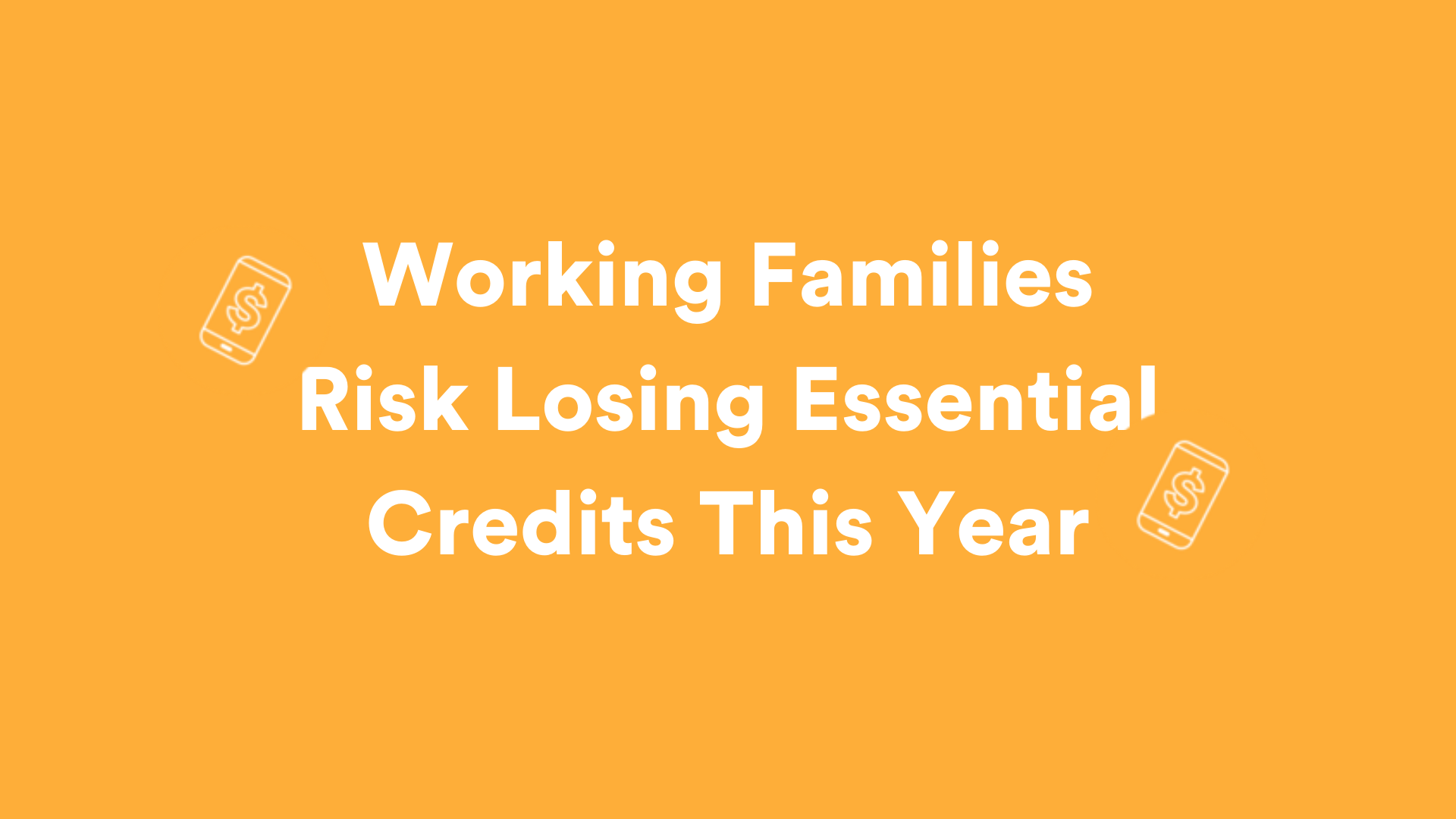Rapid Insights
Research Briefs
To help SaverLife members and millions of others like them, policymakers should focus on both sides of the ledger: income AND expenses. This will require a shift in mindset toward policymaking focused on household balance sheets instead of solely on macroeconomic indicators like Gross Domestic Product growth, the stock market, and the unemployment rate.
Only 54% of families reported receiving the full amount of Child Tax Credit payments they expected.
Members are saving, but they’re not building wealth.
While a well-intentioned benefit, many families with lower-incomes can't afford paid childcare
Despite rising costs, CTC payments are helping families keep a critical savings cushion.
SaverLife members have increased spending on necessities by as much as 49% since 2019.
The majority of the 20% unemployed say they were working prior to COVID, and they’re unable to find work now.
Why have so many more people reported their hours have been reduced? In September, we saw a 33% spike in members reporting their employer cut their hours versus pre-pandemic levels.
SaverLife members are finding the Child Tax Credit payments impactful in covering day-to-day expenses.
In August, the percentage of SaverLife members who indicate they are working at pre-pandemic levels fell 14%.
Of those who have received a Child Tax Credit payment, the majority say they plan to spend the money on immediate household necessities.
SNAP recipients are spending 21% more on groceries than they were in 2019.
This pattern is very similar to what we saw in 2020 when large cash infusions such as tax refunds, tax credits, and economic stimulus payments helped members bridge gaps in employment.
Restaurant spending was more than 100% higher than at this point in 2020.
The median spend on gas and automobile maintenance was nearly 100% higher than in May of 2020.
Credit card payments are way up in 2021. Media payments per month in 2021 are 34% higher on average than they were in 2020.
The percentage of members depositing $100+ is down since April.
Only 50% of members increased balances in May 2021 as refund and stimulus payments are used to play catch up on everyday expenses.
As of late May, 80% of SaverLife members have filed their taxes, meaning there are still 20% of members who have not. More than any other year, filing taxes for 2020 is critical.
Lifeline is a federal program that provides discounts on internet access. 51% of members don’t know about it.
SaverLife leveraged growth marketing strategies, custom content, and research to learn more about microentrepreneurs and help them along their path to financial stability. Through this approach, we recruited over 9,000 new members in 10 weeks and informed the financial health field and nonprofit sector on the systemic challenges facing microentrepreneurs.
There is a lack of financial tools and information that microentrepreneurs can access to improve their financial health. However, this creates an opportunity for the financial health and social sectors to develop targeted resources for microentrepreneurs that they can use to shore up their savings and achieve their business aspirations.
SaverLife partnered with Financial Health Network, Commonwealth, AARP Public Policy Group, and many more to create impact metrics that measure the effectiveness of short-term savings programs for people living with low to moderate incomes.
SaverLife, Commonwealth, and Neighborhood Trust followed up with CTC-eligible families, after they filed their 2021 tax returns, to learn what an expanded child tax credit would mean to them.
SaverLife identifies six major policies that members say would give them the ability and opportunity to save, establish financial stability, achieve resilience, and build wealth for generations to come.
Why and how SaverLife members are able to improve their financial health over time.
This research assesses members’ awareness and perceptions of the relationship between emergency savings and retirement savings.
An American Experiment in Financial Security: What We Learned and What Families Stand to Lose
This report features exclusive research on the savings behaviors of SaverLife members nationally and in three communities—Atlanta, Detroit, and Washington DC.
The early promise of the Child Tax Credit: banking data indicates increased stability through savings
SaverLife CEO, Leigh Phillips, published a paper in the Federal Reserve Bank of San Francisco’s Community Development Innovation Review
The expanded Child Tax Credit has the potential to end extreme poverty. But only if the help reaches families.
In 2019, the FINRA Investor Education Foundation and SaverLife began a collaboration to create a scalable and sustainable savings program for use by community nonprofit providers of workplace financial wellness programs.
How the pandemic has affected small businesses.
SaverLife members in the Red Tab Savers Program saw significant improvements in their Financial Health Score.
How the pandemic has impacted low-income parents of school-age children.
How SaverLife implemented SMS messaging to help members jumpstart their savings.
Working families are facing a major financial loss—the potential erosion of essential tax credits, like the Earned Income Tax Credit.
We present three stories that expose why housing policy is critical now and for the future.
The FINRA Foundation and SaverLife partnered to conduct a study on the role small amounts of savings play in shaping financial well-being.
This study examines the impact of our savings competition with prize-linked savings, motivational text messaging, and peer comparisons.
SaverLife partnered with Intuit to build a culture of savings in Johnstown and Bluefield.
The data indicates that cash grants had a stabilizing effect on families during the pandemic.
In the summer of 2020, we followed up with members to see if and how attitudes and perceptions of the racial wealth gap had changed following nationwide demonstrations for racial justice.
What SaverLife has learned from tracking the financial impact of COVID-19 on our members since for the first six months of the pandemic.
Liberation in a Generation & SaverLife partnered to understand how members are impacted by the racial wealth gap.
SaverLife analyzed the impact of fines and fees on low-income Californians.






